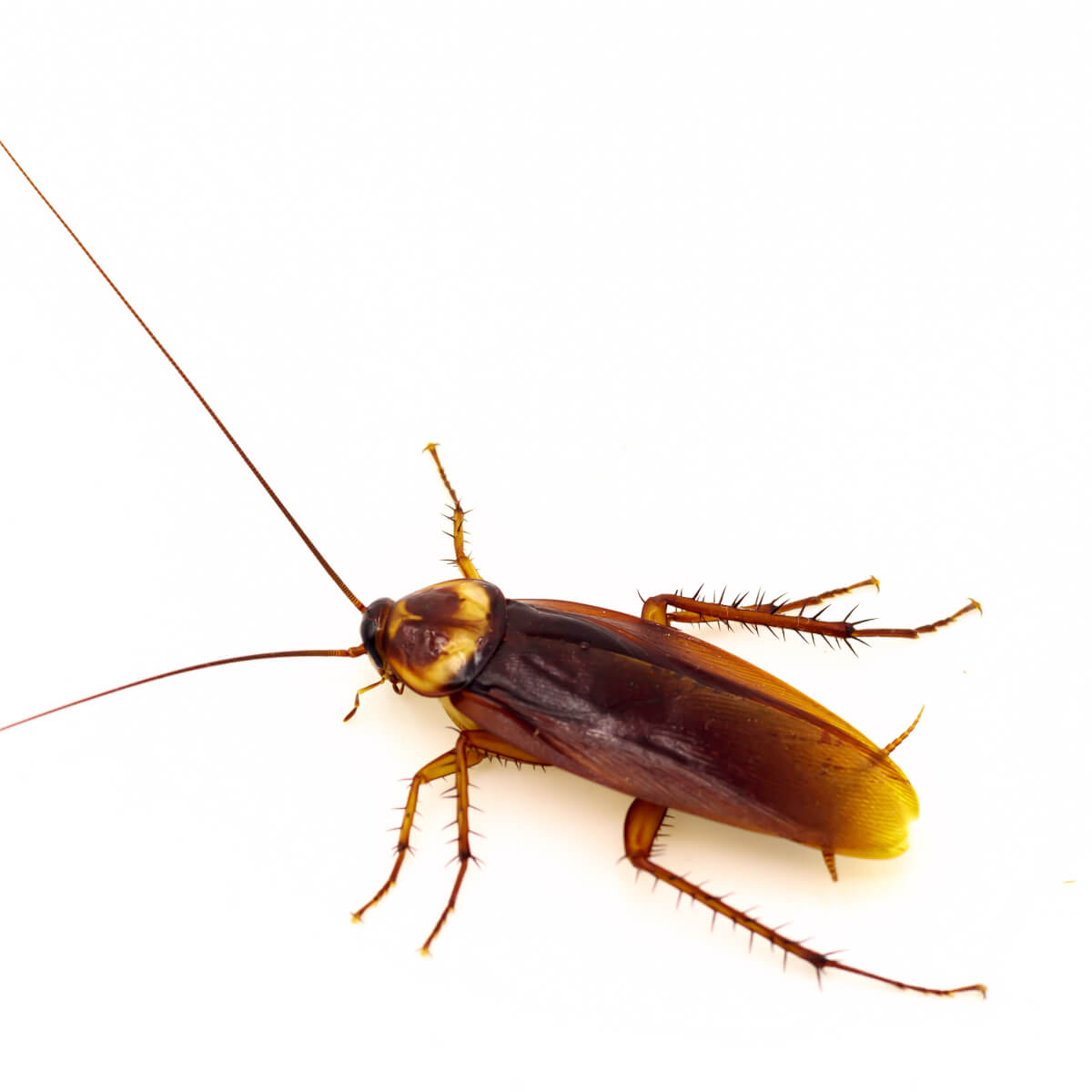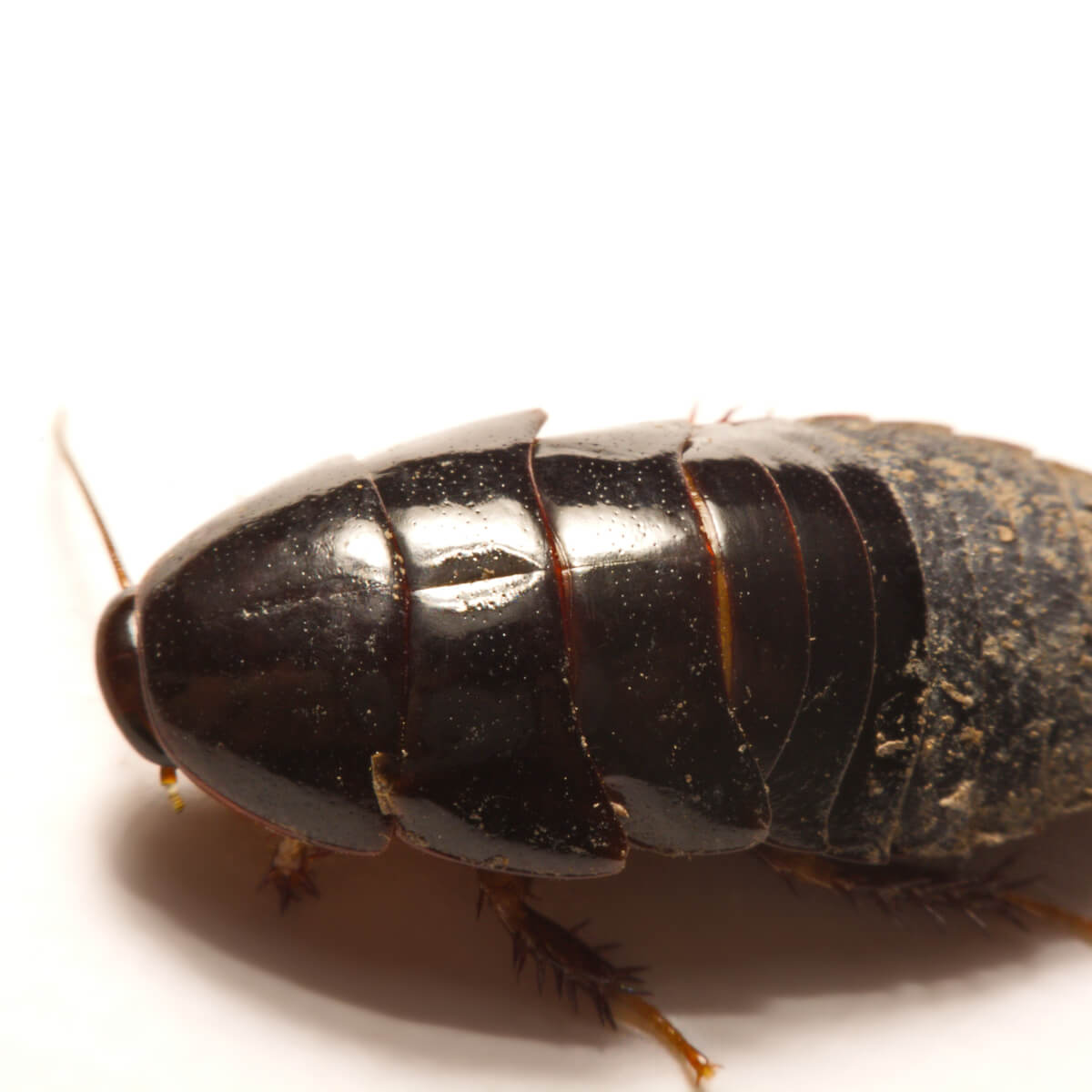Cockroaches
Cockroaches are the pinnacle of evolution. Having gone through almost no changes over the last 200 million years, they are exceptionally resilient creatures. They've already survived several mass extinctions and by the looks of it, they're here to stay.
There are over 400 species of cockroaches in Australia (we even host one of the biggest species in the world), but only a handful of those are actual pests. Let's delve right into that handful.
Species of cockroaches in Australia
Commonly asked questions about cockroaches
Cockroaches are omnivores, so they will literally eat anything they can process. And they can process a lot. Any kind of food or organic waste can be considered an open buffet for cockroaches. This even includes sewage, which apparently they find irresistible. Leaving any greasy trails is like an open invitation for them.
Most cockroach species seem particularly drawn to carbohydrates (bread, potatoes, rice, pasta). Like many other insects, they also enjoy the occasional sugar snack.
As far as meat goes, they usually prefer it dead and not trying to kill them. However, if they are starved, they can go for a living prey - you. The area around the eyes seems to be of specific interest to roaches as this is where they're most likely to bite. Getting bitten by a cockroach is a cause for serious concern - this indicates they are very hungry, which is usually a sign of very large populations.
The debate about cockroach filthiness rages on. Some experiments suggest they are not as dirty as we think. They groom a lot as most of their perception comes from their legs and antennae, so they always need to keep those clean.
On the other hand, they're spreading germs around. And because they might be spreading germs you would never have contact with otherwise, this might pose a danger. They can also carry some harmful bacteria such as staphylococcus and salmonella. So, all things considered, you don't want them crawling on your food.
Roaches can also cause allergic reactions. Their saliva, faecal matter and body part leftovers can all cause allergies and asthma attacks. If this happens, consult your general physician immediately!
Read also: Are Bed Bugs Dangerous?
The most common areas where cockroaches can be found living are bathrooms, kitchens, laundry rooms, garages and basements. They often enter homes through pipes and drains. So make sure to pay attention to hidden, dark places with access to water, such as plumbing behind sinks, baths, toilets, dishwashers and laundry machines. These places provide moisture, shelter and a safe breeding ground for roaches.
Learn if cockroaches are attracted to the light of your home.
Cockroaches have an egg case called ootheca. Some species carry it with them until the eggs hatch. Other species hide it where it's safe. Some favourite hiding spaces would be:
- Dark and humid - the bathroom would be a perfect place for roaches because they love dark and humid places. The basement would be another fan favourite. Under the kitchen sink is also among the usual suspects.
- Behind or under furniture and appliances - it's dark, it's safe, and it probably contains food. The area behind your cupboards, behind or under the fridge, behind or even inside the sofa - all fantastic places for the little buggers to hide their offspring.
It's a myth that cockroaches only infest poorly maintained places. You can have the most immaculately cleaned apartment and still get a cockroach infestation. Sure, a mess would make it easier for them, but cleanliness doesn't guarantee an infestation won't happen. What are roaches really looking for when they're infesting your property?
- Food;
- Water;
- Shelter;
- Warmth;
With this in mind, leaving food around is by far the worst offender. Second place would be having leaky faucets. Roaches love bathrooms because bathrooms are usually both warm and humid (does this remind you of tropical climates where roaches thrive?).
Let's first be clear - cockroaches can absolutely not survive a nuclear explosion. The heat from the explosion will exterminate them after than we could. Aside from the heat, there will be a radiation aftermath that makes things a bit more interesting (if they are far enough away to survive the detonation).
Cockroaches are very resilient creatures. They're certainly more resistant to radiation than we are (about 10 times more). That being said, they're still not immune to it. The simple structure of their bodies makes their cellular division less complicated than ours. We have a lot more cells, which makes us more susceptible to radiation damage because cells are most vulnerable while dividing. Roaches don't have that problem.
This doesn't make them immune to radiation. They're still relatively low on the radiation resistance scale compared to other arthropods. Radiation can still kill them. And the aftermath of a nuclear event has enough radiation to kill at least some of them. So while some of them might be able to survive if they're far enough away from the explosion, many of them will perish.
How to detect a cockroach infestation
Unless you have an extremely severe infestation, you're very unlikely to see a cockroach during the day. They're nocturnal creatures and they're used to hiding in the shadows. If you actually see a live roach during the day, it's a good idea to call for an inspection immediately since this points to a severe infestation.
Other signs might include:
- Finding an ootheca - this is highly unlikely since they hide them, but if you come across one of their egg sacs - you have roaches;
- Excrements - small, brown, and cylindrical, cockroach faeces is one of the most conclusive pieces of evidence your home is infested;
- Exoskeletal parts or skin - as the roaches live and die, they leave body parts behind - parts of their exoskeleton, skin, etc. You're likely to find those and they're likely to activate your allergies if you have an infestation.
- Nymphs - roaches do not undergo full metamorphosis. They hatch as nymphs - same basic morphology as adult roaches, only smaller and pale. If you see something like this running around, you should be expecting a new batch of roaches.
How to prevent a roach infestation
There is no definitive way to prevent a roach infestation. There is a myth that cockroaches prefer to infest only poorly maintained homes, which is not exactly true. These insects are mainly interested in food and they will go into any place to get it. However, cleaning your home regularly and keeping the food sealed can increase the chances of keeping the pest away.
Learn more about: How to Get Rid of Cockroaches in Your Home
What to do in case of a cockroach infestation
If you have a cockroach infestation, the first thing you need to do is identify its source. It could be a leaky tap, food lying around, greasy trails, high humidity or any of the other reasons we've listed. Check if it's something you can easily fix.
It's not a good idea to use over the counter bug sprays. Even if they manage to kill the roaches (and there is no guarantee of that), they won't solve the problem with the infestation. For every cockroach you see, there's a lot more you don't see. And by spraying with chemicals, you're alerting them to your presence. Unless you can spray their hiding place, this will be completely ineffective. Even if you do spray their hiding place, there is no guarantee it will work. In fact, it probably won't. That's why it's a good idea to leave it to professional cockroach exterminators.



